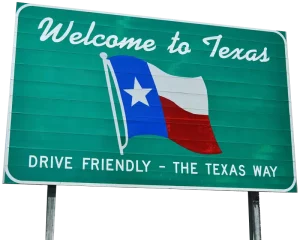Cash Advance Loan VS. Credit Card Cash Advance
Go Back To Previous PageA cash advance loan and a credit card cash advance serve a similar objective of offering borrowers quick funds through seamless approval. Both are short-term loans. Despite this, the two terms are worlds apart. We explore the differences in our cash advance loan vs. credit card cash advance discussion and pinpoint their similarities. Let’s jump straight in and discuss cash advance loans.
What Is A Cash Advance Loan?
A cash advance loan is a short-term credit facility from a lending institution, typically to be paid by your next payday.
A cash advance lets you meet unexpected costs such as emergency car repairs and medical bills. Most lenders will deposit the cash to your account the same day without any paperwork. The interest rate on cash advance loans depends on multiple factors, such as income, debt-to-income ratio, and credit score.

A mobile device indicating that credit approval has been granted rests on top of credit approval. A ballpoint pen, a calculator, and a pair of eyeglasses rest next to the device. They were photographed with a very shallow depth of field.
How to qualify for it
To qualify for a cash advance loan, you must have a bank account with the lending institution and usually a good credit score.
Also, you must demonstrate the ability to pay through regular salary remittances or deposits into the account. Your credit score must also be excellent for quick approval and lower interest charges.
With technological advances and online banking, you don’t have to visit your local bank branch to submit a manual application. You can easily apply using a browser or a banking app installed on Google Play or the App Store. Still, you must contact your bank for such installations since verification is needed.
Most lenders will not ask for security or personal guarantors for cash advance loans. But, these requirements become obligatory if you have a poor credit score. Lastly, they charge a cash advance fee.
What Is A Credit Card Cash Advance
A credit cash advance is a financing solution based on a certain percentage of future credit card receipts a credit card issuer provides. Credit card cash advances carry higher interest rates.
For example, if you need $1,000, you’ll get the funds now, and a certain percentage of your future credit card deposits will go towards clearing the credit.
There are various ways to withdraw cash with a credit card cash advance:
- Through an automatic teller machine (ATM
- By depositing a cheque at a bank
- Cashing at a financial institution such as a bank
Typically, the interest rates for such withdrawals are higher than standard purchases.
Additionally, you’ll pay more to the credit card company if you fail to deliver on time since the facility has no grace period.
There are also charges that the lender can peg on the amount. However, some lenders may charge a flat rate for all fees. You’ll most likely pay a usage fee if you withdraw from an ATM. Likewise, check clearance attracts a certain fee. Alongside interest charges, a cash advance carries a different type of balance for credit purchases. However, your outstanding monthly balance will be a sum of the credit purchases and cash advances.
Your lender often allows you to pay a minimum monthly amount, essential for keeping a positive credit score. The outstanding amount accrues interest and increases your total payable amount or debt.
Risks of Cash Advance Loans and Credit Card Advance Loans
Despite the numerous advantages of these two credit facilities, there are some potential risks to borrowers. First, the interest rates are higher than usual loans, which subsequently increases the cost of borrowing. Secondly, the repayment period is too short, creating a budget hole in your finances. When this happens, you’re likely to enter into a debt trap by borrowing every month.
Eventually, a lack of a proper financial management strategy can balloon into a debt crisis, the leading cause of default. For example, young Americans taking credit card debts have a higher rate of delinquency than the rest of the population.
Credit cards are good choices for credit if you use them for emergencies rather than impulse buying.
Consider consolidating your debts into manageable levels if you have a debt crisis.
Depending on your location, you can approach your lender and discuss the possible options. For instance, to get personal loans in Portland, Oregon, the lender will look at your debt profile and provide a workable solution.
It’s essential to check your FICO score at least twice a year and take crucial steps to improve it. Central reporting agencies issue credit reports, including Experian, TransUnion, and Equifax.
I am using home equity.
If you own a home with a substantial amount of equity, you may want to consider a home equity loan or line of credit as a potential solution. However, it’s essential to remember that failure to pay for these loans could result in losing your home. Additionally, because of the economic impact of COVID-19, lenders may have stricter standards for approving home equity loans.
Retirement account withdrawals.
Under the CARES Act, individuals can withdraw up to $100,000 from their retirement accounts without incurring the standard 10% penalty if they have been financially impacted by COVID-19 or diagnosed with the virus. However, taxes must still be paid on the withdrawal, which can be spread out over a maximum of three tax years.
The IRS provides a Q&A section on coronavirus-related distributions.
Get help from friends or family.
If you require immediate funds and have someone such as a friend or family member who can wait a few weeks or longer to be repaid, it could be a better option than a credit card cash advance or a payday loan. Another option could be to search for someone who can co-sign a loan.
In both cases, there needs to be an understanding between the borrower and the lender. Failing to repay by the agreed-upon time could harm the relationship, so it’s essential to consider this carefully.
Conclusion
A cash advance and a credit card advance are popular because you get cash without a hassle and pretty fast. Also, you can take care of emergency cash needs quickly.
However, short-term credit facilities can attract high fees and interest rates, affecting your credit score if you fail to pay on time.
Lastly, they can develop into a habit and impact your spending negatively. It’s important to exercise restraint and only borrow to meet urgent expenses.


